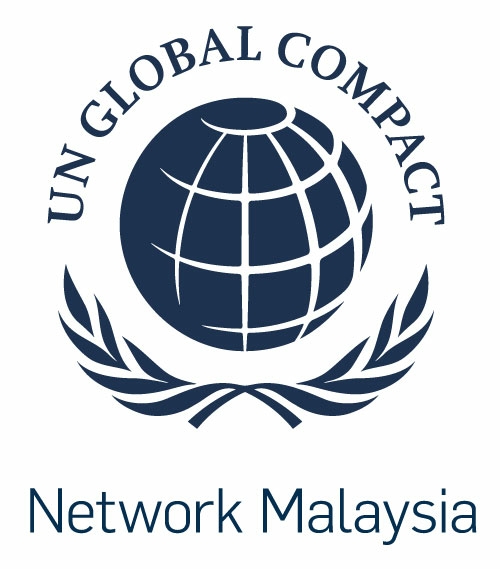Role of Businesses in Realizing SDG 2
Role of Businesses in Realizing SDG 2

(Article by Global Compact Network Malaysia)
Businesses play a central role in providing food to communities and combating hunger and malnutrition. Without careful management and safeguards, company operations can negatively impact the local food security of communities surrounding their operations and supply chain. A particular problem is abuse of land rights through land grabbing. Businesses in all sectors should ensure that land used throughout their supply chain is not, and has not, been taken without free, prior and informed consent from local communities. Companies can also negatively impact communities by restricting access to agricultural inputs including seeds, water supplies, knowledge and finance. Responsible supply chain practices that respect land rights and support smallholder farms can help two-thirds of the world’s population address hunger and achieve economic development. Business is also an emitter of greenhouse gasses, which contribute to climate change and thereby can exacerbate hunger through impacting yields.
State of Food Security and Malnutrition in Malaysia
- Malnutrition (source: KRI, 2019)
- Stunting increased from 17.2% in 2006 to 20.7% of all children below 5 in 2016, while 13.7% of children were underweight in 2006
- 9 million Malaysians are affected by anaemia, around half of them women between 15 to 45 years of age. The median calcium intake of Malaysians was less than half the recommended level in 2014.
- Non-communicable diseases (NCDs) such as obesity and diabetes dominate the leading causes of premature death and disability in Malaysia
- The prevalence of known and undiagnosed diabetes increased from 6.9% in 1996 to 17.5% in 2015. In 2015, 30.0% of adults were overweight, and a further 17.7% were obese
- Food Security
The widespread, if not consensus view is that Malaysia does not face serious food availability issues. Food supplies available in the country are, by and large, sufficient. However, having sufficient food in the country does not mean that every person in the country has equal access to food.
- Food accounts for a major share of expenditure of most low- and medium-income households. Households earning less than RM2,000 monthly spent an average of 41.4% on food. From 2003 to 2017, food prices increased by 69%, compared to a 42% increase in the overall consumer price index (CPI), i.e., food price inflation has been higher than the overall increase in prices. This poses a problem to people of lower income as they’re hardest hit by price inflation. (KRI, 2019)
- Moreover, climate change poses a threat to rice production in Malaysia. Projections by the FFTC Agricultural Policy Platform (FFTC-AP) indicate that rice yields will decline by 4.6-6.1% if the temperature increases by 1 °C, and from 5 mega-tonnes (MT) to 4 mega-tonnes per hectare if it increases by 2° This poses an accessibility risk to lower income households as the price of rice might further inflate.
Do your actions satisfy leadership qualities?
- Intentionality
- Is your company committed to supporting the achievement of Goal 2? Have you developed a holistic strategy that reflects this commitment, covering end-to-end operations and the wider community?
- Are you committed to learn from your actions and do you have processes in place to improve them accordingly?
- Is your strategy supported by the highest levels of management, including the Board of Directors?
- Ambition
- Do your actions achieve long-term outcomes that greatly exceed those resulting from current industry practice?
- Are your actions aligned with what is needed to achieve Goal 2?
- Consistency
- Is support for Goal 2 embedded across all organizational functions?
- Are staff and board incentives aligned with achieving Goal 2?
- Collaboration
- Do you proactively look for opportunities to partner with Governments, UN agencies, suppliers, civil society organizations, industry peers and other stakeholders to inform how to advance Goal 2?
- Accountability
- Do you publicly express your commitment to advance Goal 2?
- Do you identify, monitor, and report on impacts, including potentially adverse impacts? • Do you mitigate risks associated with your action?
- Do you remediate negative impacts associated with this action?
- Do you engage stakeholders in a meaningful way?
Framework for Business Action
Business Action 1: Engage in the creation of secure and decent jobs, especially in least developed countries and for vulnerable populations
Smallholder farmers around the world can struggle to make a profit from producing food, and most of the world’s undernourished people depend on agriculture for their livelihoods. To address this challenge, businesses can help smallholders increase yields and incomes from sustainable agriculture. Responsible sourcing of agricultural products and acquiring land for other purposes requires businesses to respect land rights, pay fair prices, and ensure that all members of their supply chain avoid unsustainably exploiting resources such as water, land and (especially women’s) labour. Leading businesses go beyond this and support smallholders directly, including through building capacity and sharing knowledge on agricultural resilience techniques, developing risk sharing initiatives, supporting marketing skills for different agricultural markets, identifying practices for increasing agricultural yields in different environments, restructuring supply chains to avoid intermediaries that exploit producers, and enabling and promoting better pay and conditions for farm workers
Example Practice
- A coffee retailer shares ten years of proprietary agronomy research to farmers in developing countries to help them increase yields and farm sustainably
- A fruit company ensures decent income for small-scale farmers by providing long-term contracts, having direct relationships with growers, engaging in capacity-building for sustainable agricultural practices and having fixed pricing
Business Action 2: Alter food manufacturing, distribution and retail to contribute to ending malnutrition and hunger in all communities surrounding company operations
Companies that manufacture food and beverage products can deploy versions of these products that reduce hunger and increase nutrition for consumers. Leading companies will develop products responsive to the nutritional needs of the poor and disadvantaged groups, and support other Goals in their delivery
Example Practices
- A food manufacturing company develops nutrient-fortified grains to deliver nutrients and vitamins to malnourished populations, with production facilities in developing countries and workers including smallholder farmers, over half of whom are women
- An agricultural product development company develops ready-to-use therapeutic food products for infant and maternal consumption in areas suffering from malnutrition, while avoiding processed foods
Business Action 3: Work towards eliminating food waste and loss
A third of produced food ends up as waste. Reducing this waste in effect increases food supply and is an important element in reducing hunger and undernourishment. As with other resources, all business can strive to minimize food waste through planning, providing maximum information to consumers and reusing leftover food products as compost. Leading businesses go further, by shifting demand and creating new markets to include healthy foods that would otherwise go to waste due to cosmetic imperfections, lack of refrigeration or high prices. Waste management companies can lead on reducing food loss and waste by pricing waste by weight or volume, and engaging with other stakeholders on reducing the amount of waste they produce.
Example Practice
- A produce store sells produce that would be considered ‘deformed’ at a discount to reduce food loss and combat hunger
- A grocer incorporates ‘smart’ packaging that indicates when meat spoils to allow customers to use food products through their full shelf life
Businesses can benefit from ending hunger as it allows them to access new and previously underserved markets. The greatest market opportunities today are also the areas seeing the fastest population growth, which will increase demand for food up to 200 per cent from current levels by 2050. In many cases, reducing food waste directly improves the financial baseline: deploying sustainable agricultural solutions and reducing food loss and waste are each projected to deliver over $650 billion in annual value by 2030.



